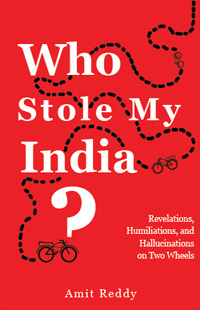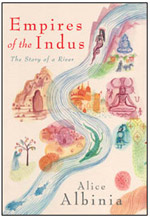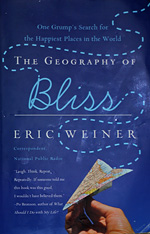 Book Title: Who Stole My India
Book Title: Who Stole My India
Author: Amit Reddy
Pages: 453
Amit Reddy was probably born in the wrong place. Even his mother thinks so when she says, ‘You should go away to America, You are nothing like Indian.’ As Reddy finds it difficult to understand and live a life that his society and surroundings expect him to, and unable to comprehend the diktat of a Hindu Indian society, he decides to fix the problem. The way he decides to do it is by travelling across the country to discover its soul, and perhaps discover his own soul that might fit within an Indian context.
As he puts it, “It’s all so frightfully confusing, but I intend to rectify this situation. The plan is ingenious, and quite simple. I’m going to explore India like few people ever have, by taking an inordinately long journey around the country; 40,750 kilometers long, to be precise… If everything goes accordingly, by the end of this journey I hope to be the complete Indian.”
He begins from Hyderabad on Kaya–a much loved motorcycle that is usually addressed as an animate being–and rides into nearly every Indian state. The journey takes him through wilderness, rugged terrains, temple-towns, remote villages, mountainous landscapes, deserts and the sprawling cities. This book isn’t about those places though, but on people Reddy meets and the way of life in India as witnessed by him.
 Title: Empires of the Indus
Title: Empires of the Indus
Author: Alice Albinia
Empires of the Indus is a story of people from the past and present of the Indus Valley. Author Alice Albinia makes the long journey from the delta of Indus at Karachi to its origin in Tibet, searching for the river’s past and reflecting on its present. She treads upstream slowly, often stopping for long periods and making long detours looking for a piece of history or culture.
Her journey begins at Karachi, where she spends her time meeting people who have lived here forever and also the ones who arrived from India after the British left, and exploring the changes that the city went through after Pakistan gained independence. She makes a slow journey upstream Indus on a boat visiting indigenous cultures and understanding their ways of life.
The story moves slowly into the past as she moves upstream. The clock moves back to the days of British Empire, unfolding the story of British struggle to explore and map the Indus and to conquer the local rulers. Further, it moves to the past where Islamic rulers dominated the landscapes and eventually to Alexander’s invasion to India. She also makes detours to the dangerous terrains in Afghanistan, crossing the border from Pakistan a few times. As she moves up the mountains, story shifts towards Buddhism and eventually to the aboriginal people and cultures. Later, the author spends considerable amount of time exploring the rock carvings and clues from paleolithic age when she is in Swat, Chitral and Ladakh. But once up in Tibet, her focus narrows down to merely making the adventurous journey to the source of Indus in the unforgiving terrain.
Throughout the book, the reader clearly sees the great commitment and effort that the author has made to extract the stories, meet the people who have information and visit every part of Indus Valley that has any significance to her chronicles. She researches through a lot of history to put her stories together and to ensure that no pieces of a known chronology has gone missing. Every chapter in the book – the sheedi community in Sindh, Kalash people in the mountains, Alexander’s march to India or on the rock carvings from the paleolithic age – are complete and well researched with all the information that one can ask for. Her narration is fluent and carries the reader upstream Indus along with her.
However, as one moves from chapter to chapter and from one part of the valley to the other, the reader feels a lack of continuity in the story. The initial chapters on history suddenly shifts to indigenous cultures in Sindh and before it is over, the story moves to the sufi saints and later to Alexander. Such sudden shifts are common all through the books, and just when you start lingering in a story, you are whisked away from it. And there are times when she entrenches into the depths of a topic so much that it appears more like a book of history than of travel.

Title: The Geography of Bliss
Author: Eric Weiner
Publishers: Twelve Books
Pages: 325
Eric Weiner sets out on a world tour on a quest to find out what makes people happy. He journeys to countries where people are peaceful, happy, rich, poor and even unhappy, to find reasons for their happiness or the lack of it.
In the first chapter or two, ‘Geography of Bliss’ appears set to be a landmark book in travel writing that stands along with Theroux’s Great Railway Bazaar or John Krakauer’s ‘Into thin Air.’ It comes across as a completely new approach to travel writing. Weiner seems to be after something really important and out to reveal a truth that can keep humans happy forever in future. But he looses track quickly as he tries to mix a journalistic research and scientific discoveries with personal experiences, and doesn’t steer the book in any particular direction. It has elements of Theraux’s mindless interactions with people encountered on the way; it has a typical journalist’s way of working using interviews supported with some data to come to some conclusion. None of these finally strike a chord with the reader, but the flow of the book and Weiner’s engaging humour takes you till the last page without much effort.
Weiner begins his journey with some scientific data. At a happiness research center in Netherlands, he goes through tonnes of data that gives an idea of most and least happy countries. He goes through some insights that reveal some obvious truths (winning a lotter makes a person happy) and some not so obvious (but the lottery winners quickly return to their earlier state of mind). The research center also helps him choose the countries to visit – Switzerland and Iceland – the countries that consistently stayed on the top of happiness charts and Moldova – the least happy country – a former Soviet territory sandwiched between Romania and Ukraine.
He spends time in these countries speaking to expats, talking to a few locals and searching for a national attitude (or conditions) to find reasons for people’s happiness levels. The book comes dangerously close to being a dry reportage of a journalist, but is saved by Weiner’s continuous infusion of humour in nearly every incident, conversation and observation. It also comes close to Theroux’s style of writing in Railway Bazaar where people and interactions take center stage and leaves everything else behind, including Weiner’s search. But his humour too becomes overdone and appears deliberately forced at occasions.
Weiner’s interactions with people and his humour helps the reader stay with the book and go along with him in the journey, though it becomes quickly obvious that he is not about to unveil any secrets to happiness. But at the end of the journey he reaffirms time-tested wisdom that your social interactions, quality of living, faith, trust, all have their contribution to happiness. He discovers that money is essential but is not the biggest contributor to happiness. But his discoveries and the strength of the topic aside, the book scores in the narration that finally keeps you turning pages.
 Book Title: Who Stole My India
Book Title: Who Stole My India Title: Empires of the Indus
Title: Empires of the Indus